Teeth whitening products and procedures can be out of budget for most people. But did you know you can use baking soda and peroxide for teeth whitening? We don’t need to spend hundreds of dollars to whiten our teeth because these household items can do the job.
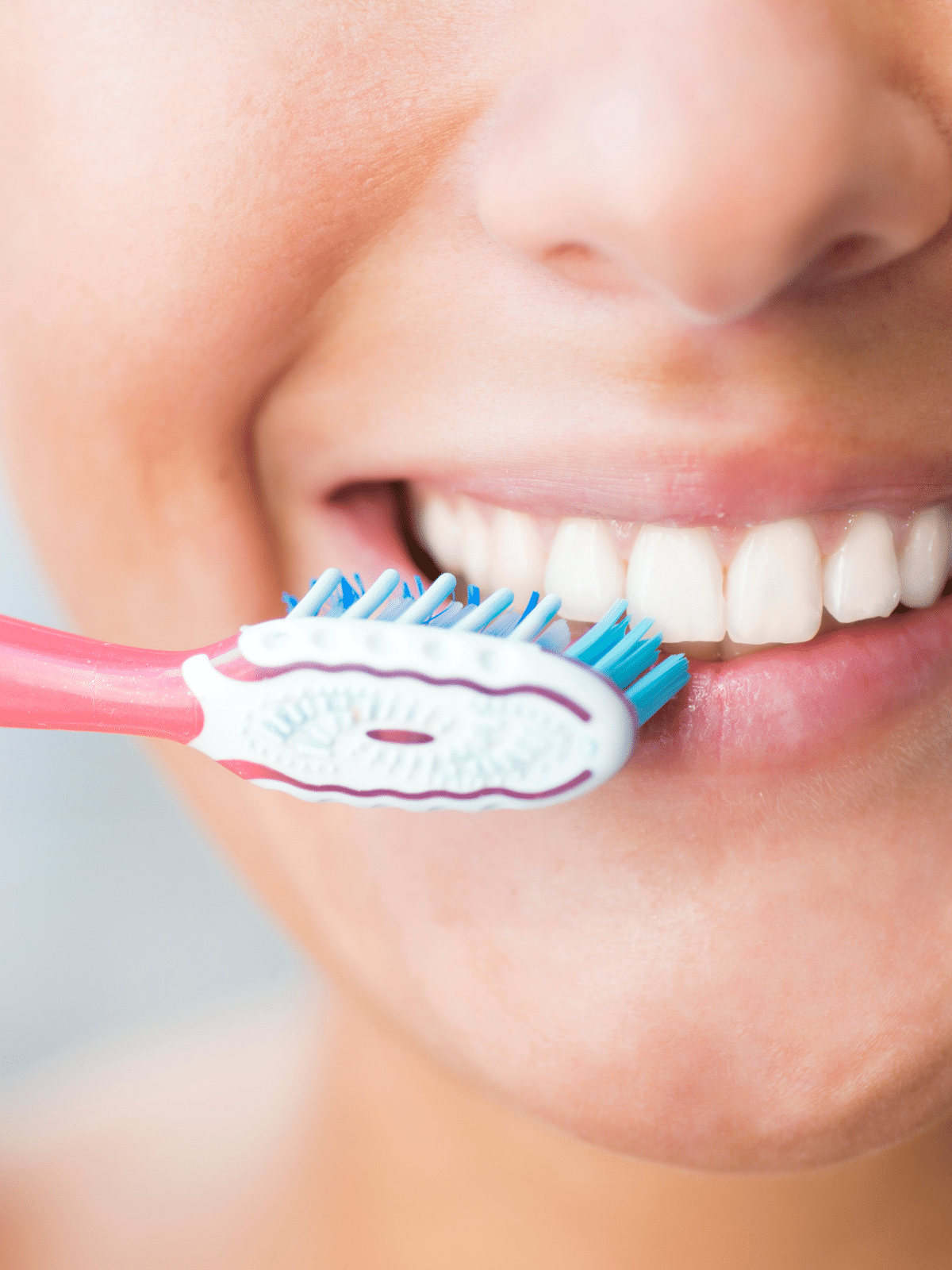
Not only are they natural, non-toxic items, but they can be easily found anywhere. You probably already have them at home, too. Baking soda and peroxide work well for your teeth if you use them correctly.
Keep reading to learn how to use these two items safely and effectively and enjoy a whiter smile in the coming days!
Jump to:
- Benefits of Baking Soda and Peroxide for Oral Health
- How Baking Soda and Peroxide Whiten Teeth
- Risks of Using Baking Soda and Hydrogen Peroxide for Teeth Whitening
- How to Use Baking Soda and Peroxide for Teeth Whitening
- Other Reminders for Maintaining Oral Health
- Using Baking Soda and Peroxide to Whiten Teeth at Home
Benefits of Baking Soda and Peroxide for Oral Health
There’s actually only one well-known benefit of using a combination of these two for your oral needs: Teeth Whitening. Each item has teeth-whitening properties that can help remove stains and revert the color of your teeth to white.
Commonly used in baking and as a natural cleaning agent at home, baking soda is an abrasive and an oxidizing agent. It aids in removing stains from the teeth’s surface, leading to teeth whitening.
It also has numerous oral health benefits on its own, such as helping with the healing process of mouth ulcers, preventing plaque buildup, helping lower the risk of tooth decay and gum disease, and helping prevent bad breath. On its own, though, it’s not enough to remove older stains, and that’s why this is usually paired with hydrogen peroxide.
Hydrogen peroxide is a common household item that’s used as a natural cleaner. But this substance also brings benefits to your teeth. Alone, hydrogen peroxide is a bleaching agent that removes stains.
However, it’s only safe to use if diluted, so you must mix it before using it on your teeth. For this, 1%-3% of hydrogen peroxide is the recommended concentration.
How Baking Soda and Peroxide Whiten Teeth
Baking Soda

Also known as sodium bicarbonate, baking soda helps whiten teeth in two ways.
First, its grainy texture acts as an abrasive that physically and gently removes any substance that may create discoloration on the surface of your teeth.
Second, baking soda helps “bleach” our teeth through oxidation. When you use baking soda for other things, and it touches water, you can see it fizz and bubble. It’s a sign of that process, which makes an alkaline solution. When this type of mixture touches your teeth, the oxidation lifts stains and bleaches the teeth.
Peroxides
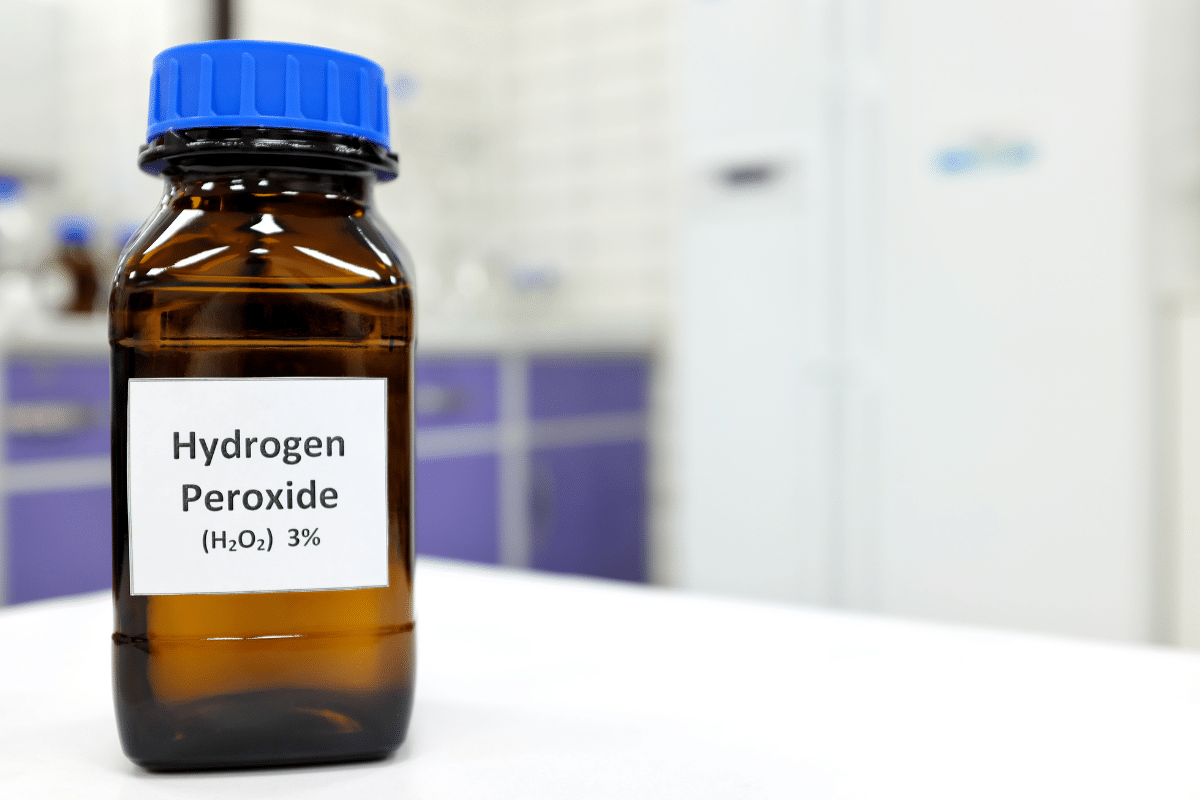
Hydrogen peroxide and carbamide peroxide bleach the teeth through oxidation. The acidity of this substance helps break down and lift stains from the teeth via oxidation. However, its effects are stronger than baking soda when it comes to teeth bleaching.
Risks of Using Baking Soda and Hydrogen Peroxide for Teeth Whitening
The negative effects of using these household substances to whiten teeth mainly stem from misuse and overuse. If you use them properly, you don’t need to worry about coming across any of these.
Misuse of baking soda and peroxide usually leads to the following negative effects:
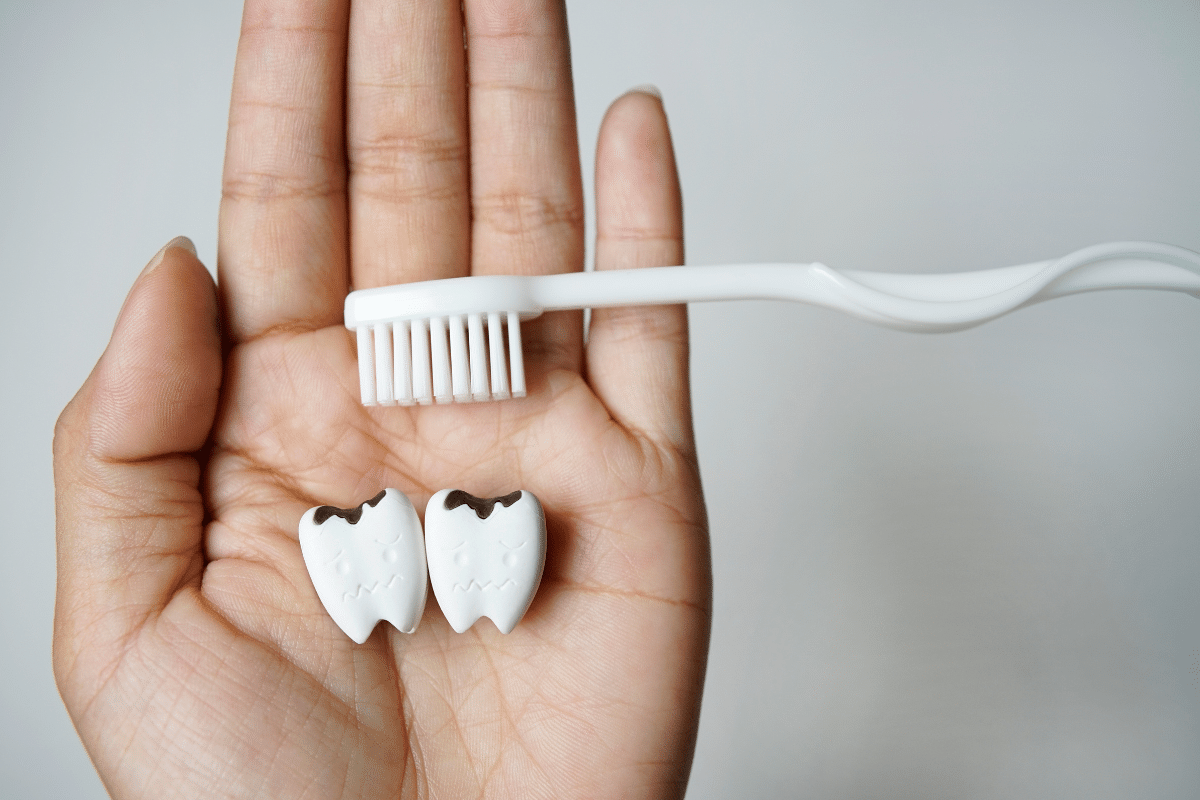
Damage to Your Teeth
While the enamel of your teeth may look hard and strong, substances can still damage it. And once they’re damaged, they can’t heal themselves.
Using a high concentration of peroxide or brushing your teeth too frequently with peroxide and baking soda to whiten teeth can scratch and even wear away the enamel of your teeth. This may lead to the formation of a cavity.
Gum Irritation
Both the abrasiveness of baking soda and the acidity of hydrogen peroxide can irritate your gums. While some dental whitening procedures use these in stronger concentrations, dentistry professionals also use gum protectors to prevent irritation.
Weakens Dental Bonding Agents
Have you had your teeth restored? If you have, dentists may have used composite resins as fillings. While they may appear like enamel, they’re weaker than our actual teeth. Too much scratching and acidity can cause these to weaken and increase the risk of them breaking.
Teeth Sensitivity
Using high peroxide concentrations will also lift minerals from your tooth enamel. This will expose the inner layer of your teeth, which can cause extreme teeth sensitivity. Believe me, that feeling is not fun to have.
How to Use Baking Soda and Peroxide for Teeth Whitening
While the risk may cause you to fear using hydrogen peroxide and baking soda instead of whitening toothpaste, you don’t need to be scared of it. Knowing how to use these substances properly involves knowing the right amount, concentrations, and frequency of using them at a point that is both safe and effective.
Here’s the proper way of using them:
- Create a paste by mixing 2 parts of baking soda with 1 part peroxide. For this, you should only use 1%-3% concentration of peroxide. You can dilute it first with water if you don’t have a low-concentration peroxide at hand.
- When brushing your teeth, use this paste in place of regular toothpaste. Make sure to brush with this paste for around 1 to 2 minutes.
- Rinse your mouth thoroughly with cool water after using the baking soda-peroxide paste. Make sure no residue is left behind.
- Only use this whitening treatment once weekly to prevent any damage and sensitivity.
- Also, make sure to avoid ingesting the paste since accidentally swallowing peroxide may upset the stomach.
Other Reminders for Maintaining Oral Health
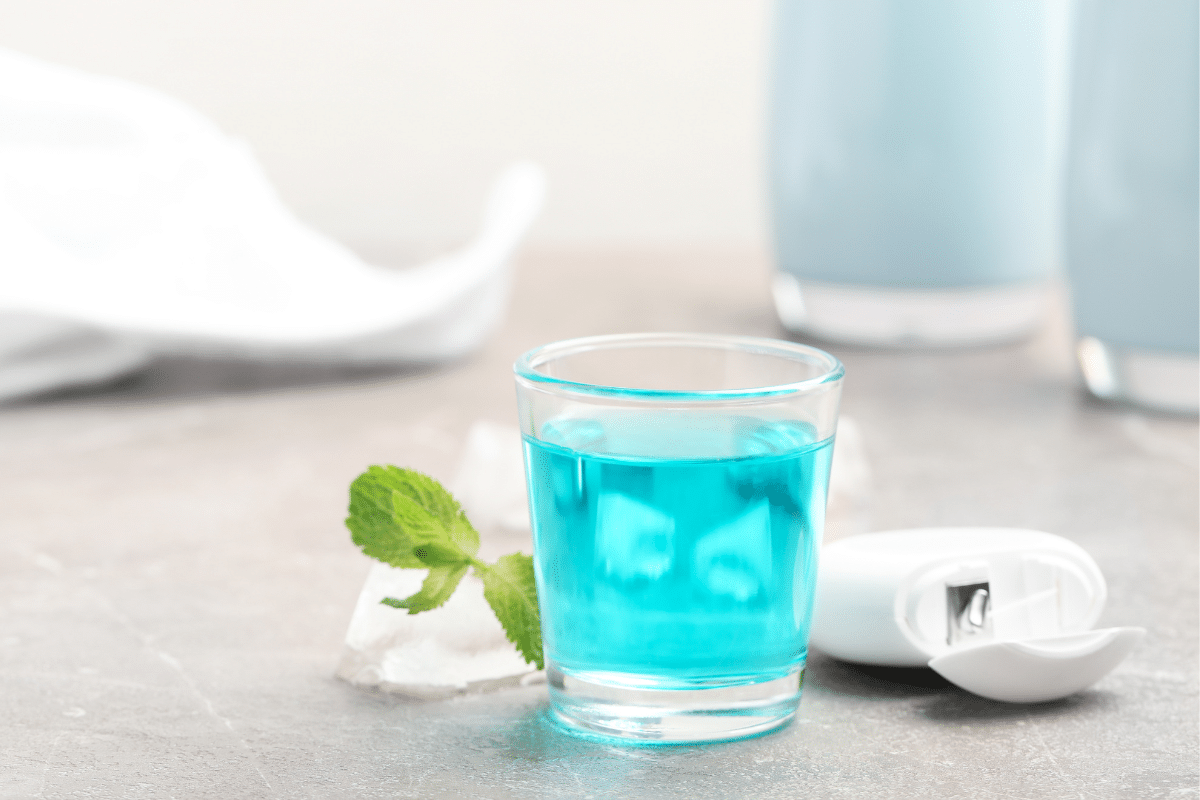
- Make sure to brush your teeth with fluoride toothpaste and floss twice daily. This is the basics of maintaining good dental hygiene.
- Use mouthwash regularly. Doing this can help rebalance the acidity of your mouth. It also helps clean up areas in your mouth that your toothbrush can’t reach.
- Visit your dentist at least twice a year. They can help clean up nooks and crannies that regular brushing can’t reach. They also help ensure your teeth and gums are in tip-top shape.
- Don’t ignore cleaning your tongue. Plaque can also build up on your tongue, so clean it when you brush.
- Limit your intake of sugary and acidic food. Many of us love sweet stuff, but we also know that too much of anything is bad; in this case, it can cause cavities in your teeth.
- If you have retainers, regularly keeping them free from plaque and bacteria is important for oral health. Just as you wouldn’t want to go a day without brushing your teeth, cleaning your retainer is something you must do daily.
FAQs
One popular teeth whitening procedure you can do at home is oil pulling. This procedure involves swishing oil inside your mouth, similar to a mouthwash. It’s meant to get rid of bacteria, which can become plaque and cause your teeth to become yellow.
A popular oil used for this method is coconut oil since it has a neutral taste and has many health benefits, such as minimizing inflammation and helping kill bacteria.
Many different things may cause your teeth to look yellow.
The most common causes are specific foods and drinks that can form stains. Some of these include coffee, red wine, and dark fruit juices.
On the other hand, poor oral hygiene can cause bacteria buildup. This bacteria can turn into plaque, making your teeth look yellow and discolored.
Most dental hygiene mistakes people usually make involve brushing your teeth. Many people brush too hard, damaging the enamel of your teeth. Meanwhile, others don’t brush long enough. Others also aren’t aware that you should replace your toothbrush every three to four months.
Using Baking Soda and Peroxide to Whiten Teeth at Home
Teeth whitening procedures aren’t limited to dental offices, and using baking soda and peroxide for teeth whitening is a popular and more affordable way of doing so. But like any home remedy, you should use them properly to ensure they’re effective and safe.
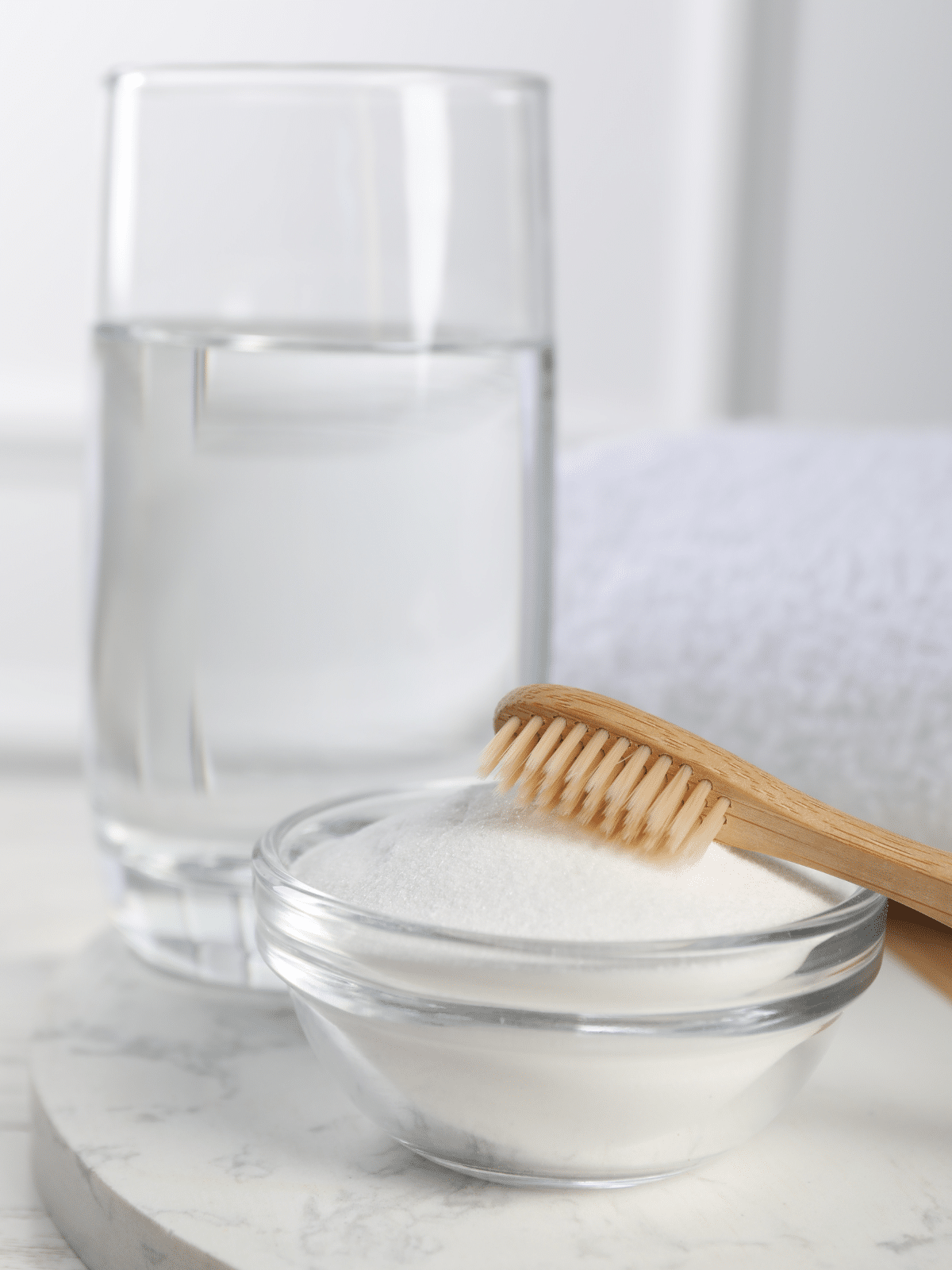
Now that you know the correct way of using these easy-to-find items to achieve pearly whites, why not try them yourself?
